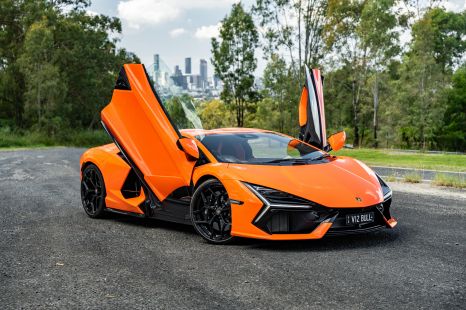

Alborz Fallah
3 Days Ago
Yet another Mazda SUV is heading to Australia. The new CX-80 offers six- and seven-seat options and a choice of petrol, diesel and PHEV.



Quickly see how this car stacks up against its competition. Select any benchmark to see more details.
Take advantage of Australia's BIGGEST new car website to find a great deal on a Mazda CX-80.
There’s no denying Mazda has transformed itself into an SUV company. The Japanese company sells eight different SUVs in Australia, and one may be forgiven for not completely following the brand’s naming strategy.

There’s the CX-3, CX-30, CX-5, CX-60, CX-70, CX-90 and now, the all-new CX-80, which actually has more in common with the CX-60, than the CX-70 or CX-90 despite the naming structure.
In fact, the new CX-80 is very much a stretched and slightly taller CX-60. The larger SUV extends the wheelbase by 250mm to 3120mm, which allows for an additional row of seats. The CX-80 can be optioned as a six or seven-seater.
Mazda calls its design language ‘graceful toughness’, which we are not entirely sure has translated all that well from Japanese.
Nonetheless, it’s hard to argue with the aesthetics, as the CX-80 is a very well-proportioned vehicle. A long nose and elongated bodywork is further amplified by the extended glasshouse, giving passengers in the third row a much better experience.
WATCH: Alborz’s first drive review of the 2025 Mazda CX-80
From the back, the L-shaped tail lights are a Mazda hallmark, and as is the case with some new internal combustion-engined vehicles, the exhausts are hidden.
The company is also introducing a new colour called ‘Melting Copper’ which looks sensational in person (though we feel it could use a better name).
Mazda Australia will offer the CX-80 with three different powertrain options: six-cylinder petrol and diesel with a mild-hybrid 48V system and a full plug-in hybrid (PHEV) with a 2.5-litre four-cylinder petrol engine.
The new Mazda CX-80 arrives in Australia around November as a 2025 model year (MY25). For an early preview of the vehicle, we came to Munich in Germany and drove the six-cylinder diesel and PHEV.
Official pricing for the new Mazda CX-80 has not yet been released. However, we believe the base model, a mild-hybrid six-cylinder petrol engine, will launch for under $60,000 before on-road costs.
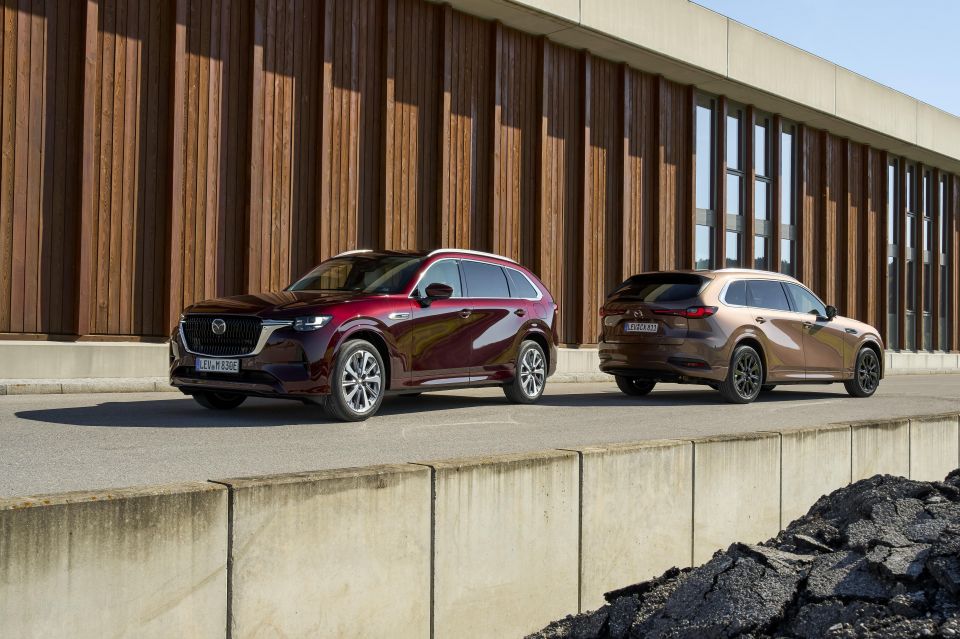
Like the CX-60, there will likely be three variants, starting with the base model Evolve, mid-spec GT, and top-spec Azami – the six-seater option will likely cost more.
To see how the Mazda CX-80 lines up against the competition, check out our comparison tool.
The CX-80 is another of Mazda’s new vehicles that blurs the lines between mainstream and luxury. Mazda has done a great job elevating its interior fit and finish to be closer to Lexus than you might expect, which is also why it has positioned its vehicles slightly more on the premium side.
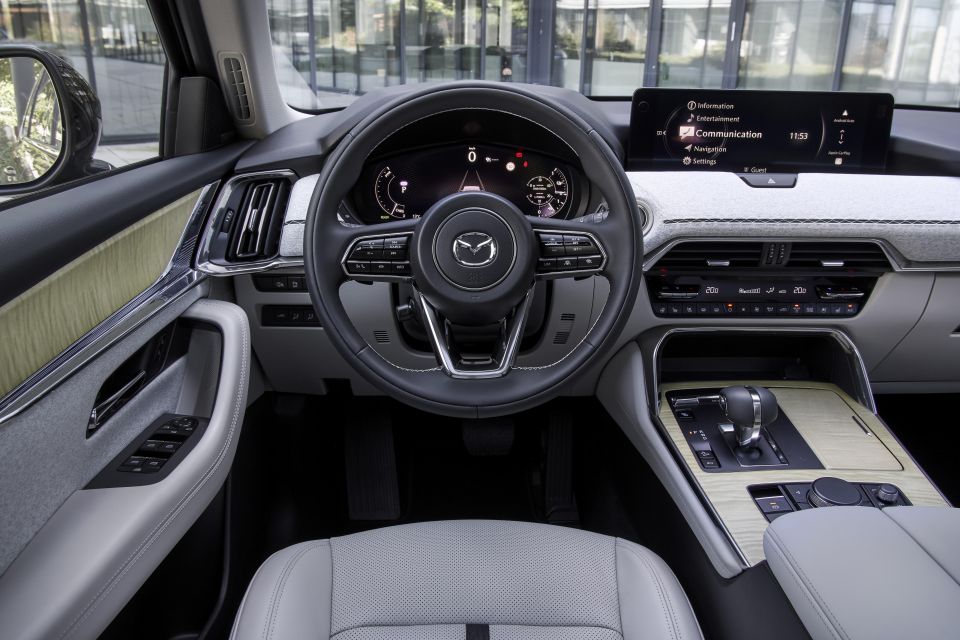
Jump in the CX-80, and there is quite a mix of materials on offer, none of which feel cheap or poorly put together. The 12.3-inch digital instrument cluster and identically sized 12.3-inch infotainment screen are both super crisp and function as expected. They are not level in terms of eye line, with the instrument cluster sitting higher.
This works well because the head-up display is aligned with the infotainment screen, so glancing across is easy and the important messages are kept for the lower cluster.
We were a little bit miffed by Mazda’s insistence on using the existing Mazda Connect software, even in this brand-new SUV. Not so much because it doesn’t do what you want, but because it doesn’t offer complete touchscreen functionality.
This is purely a software issue because the screen itself is touch-sensitive. Once you activate Apple CarPlay or Android Auto (both available wirelessly), the infotainment system very much becomes a touchscreen.
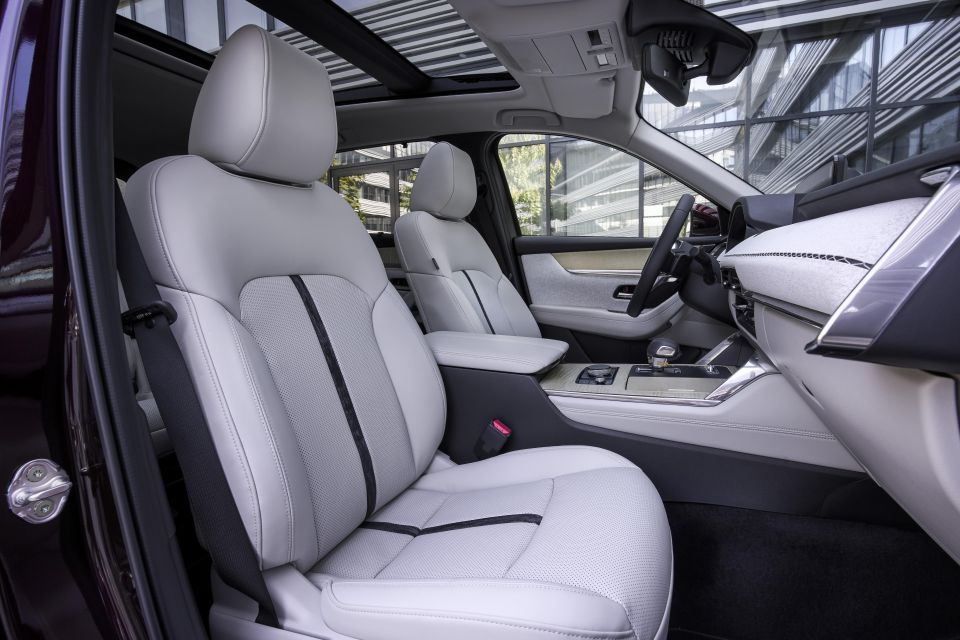
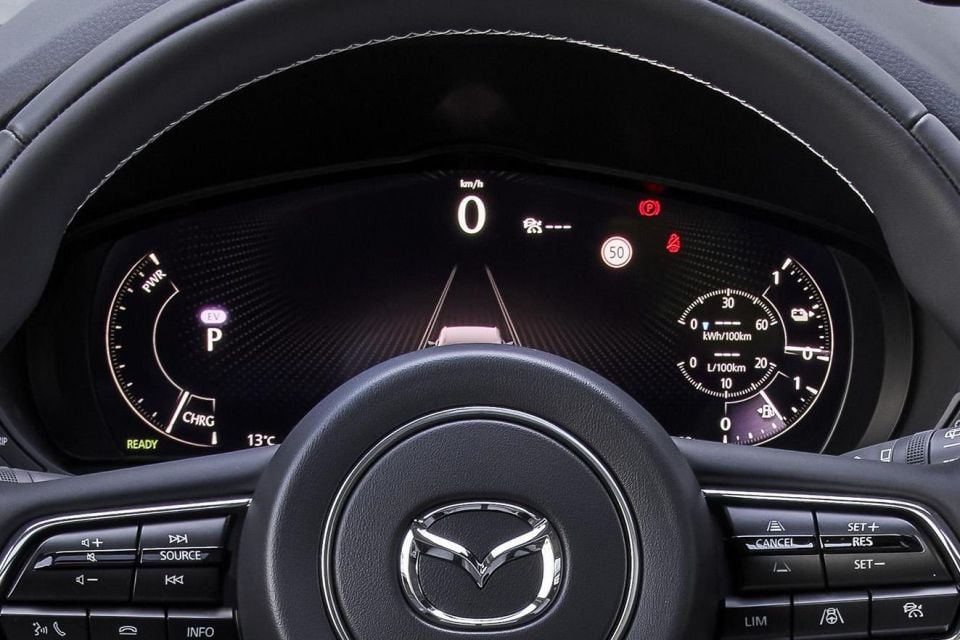
But if you wish to use Mazda’s native software, you are forced to use a rotary dial to move around the menu options, which feels a few generations behind.
Other than that, we found the steering wheel, the seats and the nice selection of materials used inside the cabin to feel very premium.
Even the buttons and gear shifter feel like they belong in something far more expensive. We particularly noticed the excellent integration of the side air vents into the doors that continue the chrome finish.
Little touches like that help bring up the cabin ambience in a category that often lacks intelligent design.
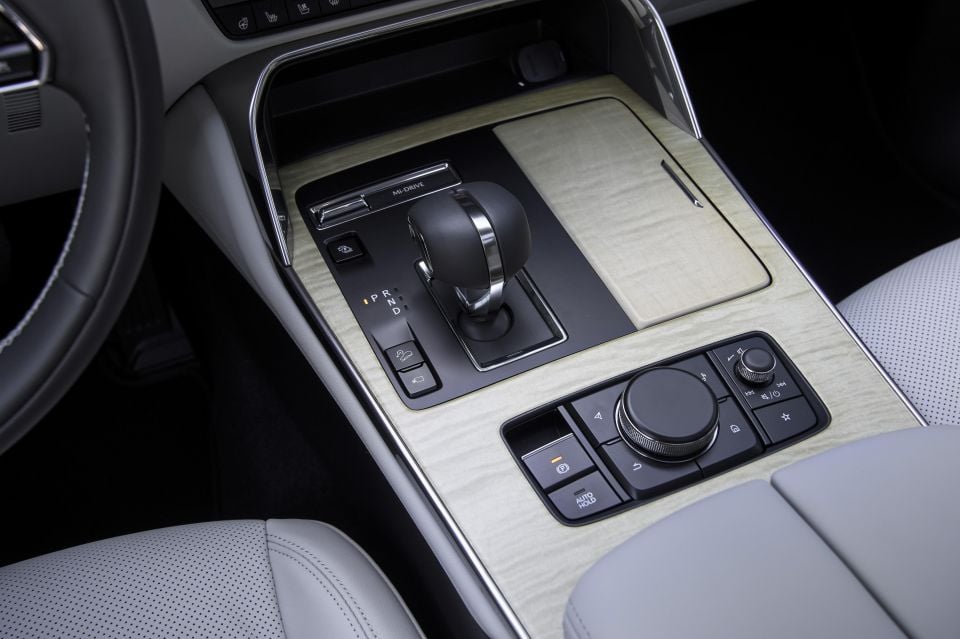

Australia will have a choice of a six- or seven-seat configuration, with the six being our pick. Unless you have a definite need to always carry seven, the six-seater makes a lot more sense.
Families who have two or three kids but want extra space should consider the six-seater option, as it gives a 2+2+2 seating format, with the second row having similar seats as the front. These are referred to as ‘captain’s chairs’.
The benefit of that is the separation between the second-row seats, allowing for a nice console in the middle for bottles or other things.
This will keep the kids much happier and separated enough to stop any arguments on long drives. The seven-seater version has a bench seat for the second row, offering a 2+3+2 configuration.
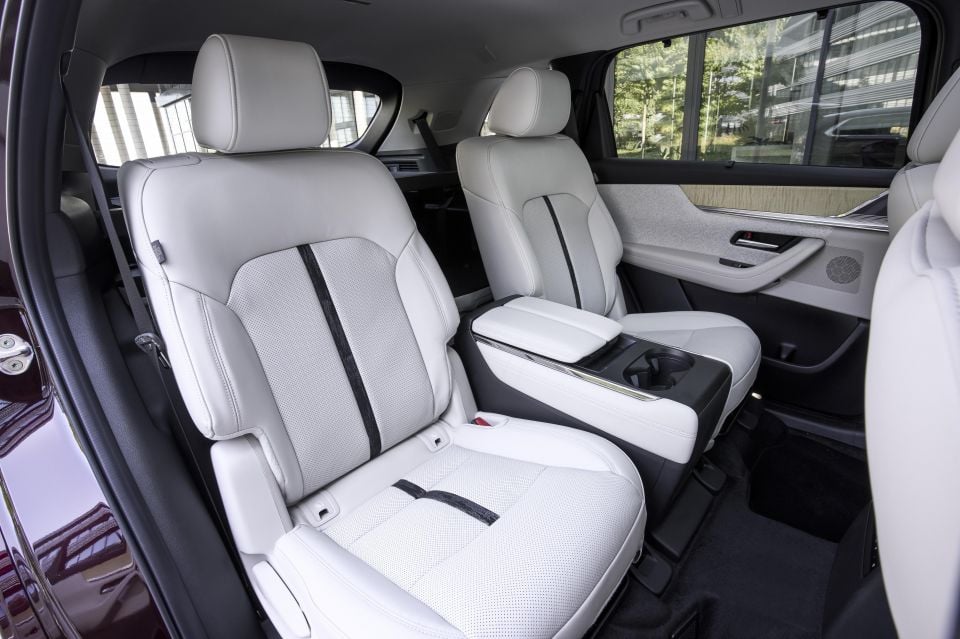
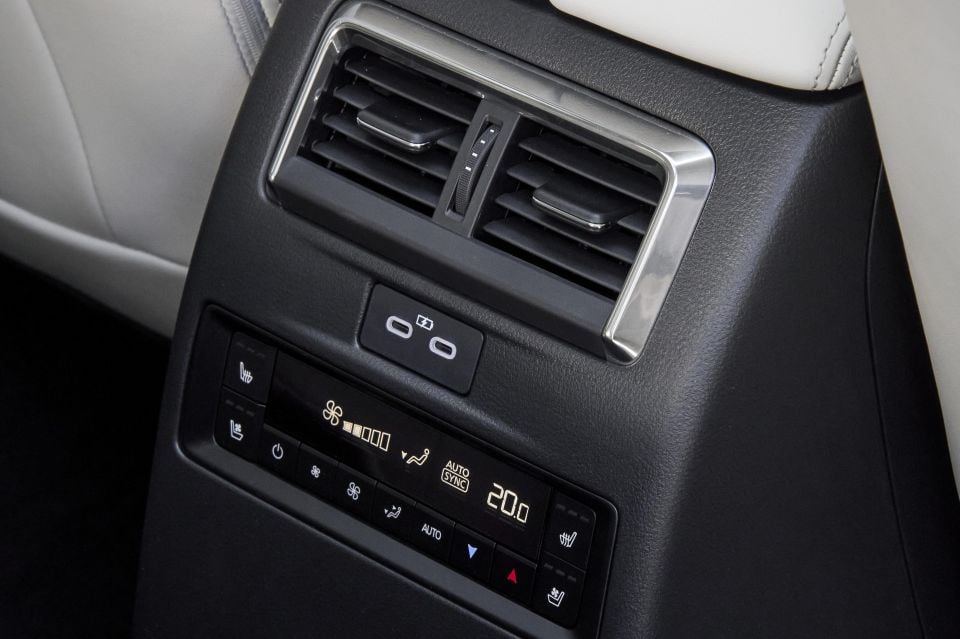
Mazda says the third row is designed for anyone up to 170cm tall.
Since this reviewer is a fair bit taller than that, we can’t tell you for sure if that’s the case. But having jumped in the third row, it was roomier than expected, and certainly we feel any average-sized kid under 12 would have no problems sitting back there.
There is tri-zone air-conditioning, as well as a sunroof option that extends to the back to the second row.
Mazda has integrated USB-C ports in the first and second rows. It also provides a 150W power supply for the standard models and a 1500W power supply for the plug-in hybrid, which means it can power certain appliances if needed.

As with other Mazda models, the first thing the car asks you to do is set up your profile with your ideal driving position. This sees the CX-80 ask for your height and then adjust the seat and head-up display as required.
We found this to be a really great way to get started, and it will be ideal if you share the vehicle with others. It’s surprising that other manufacturers do not offer this basic system.
Overall, we were very pleasantly surprised by the CX-80’s interior both in terms of its quality and aesthetic appeal. We would love the native system to support touch inputs, but we suspect most owners will simply run CarPlay as their default choice.
We would also love to see Mazda Australia bring the white interior option available in other markets, but we were told it has seen limited take-up in other models, meaning it likely will not be offered for the CX-80.
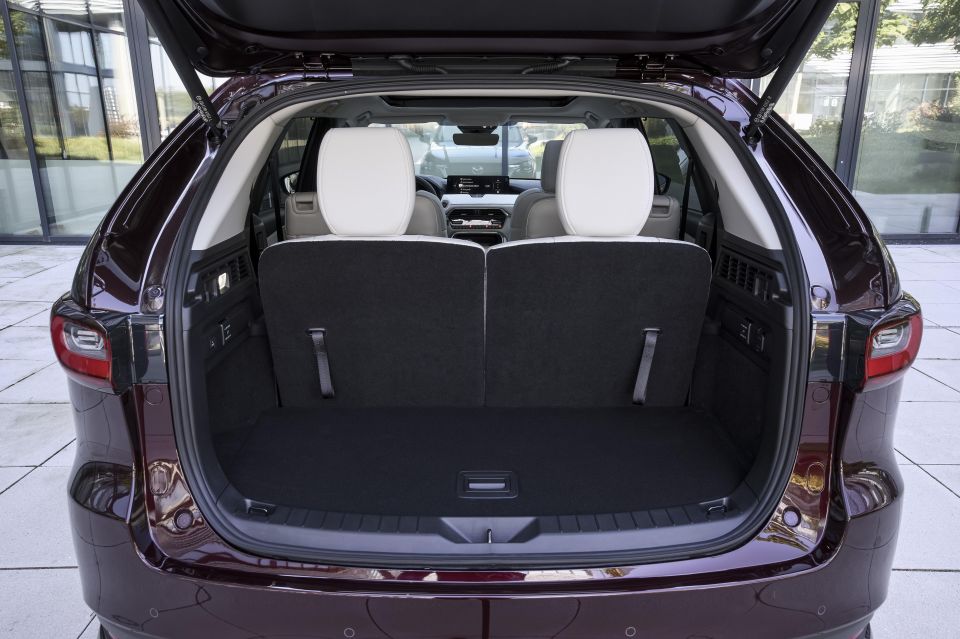
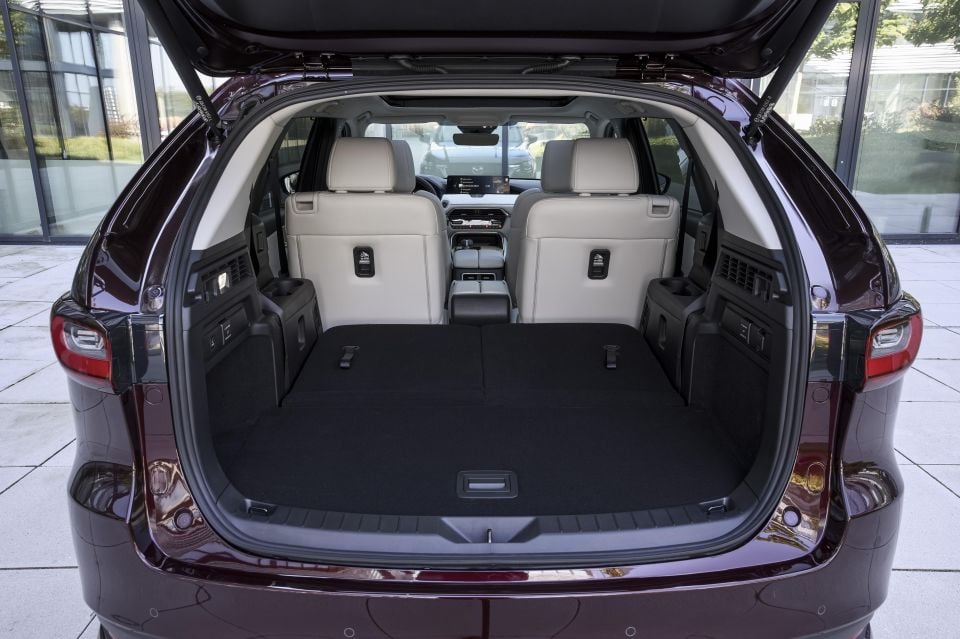
| Dimensions | Mazda CX-80 |
|---|---|
| Length | 4995mm |
| Width | 1890mm |
| Height | 1710mm |
| Wheelbase | 3120mm |
| Cargo capacity | 258 litres (7 seats) 687 litres (5 seats) 1971 litres (2 seats) |
To see how the Mazda CX-80 lines up against the competition, check out our comparison tool.
As final specifications for the petrol six-cylinder are yet to be finalised for Australia, we have included the specifications for the two models that we tested. Nonetheless, in the CX-60, the 3.3-litre turbocharged inline-six petrol engine produces 209kW of power and 450Nm of torque, which we anticipate will remain unchanged.
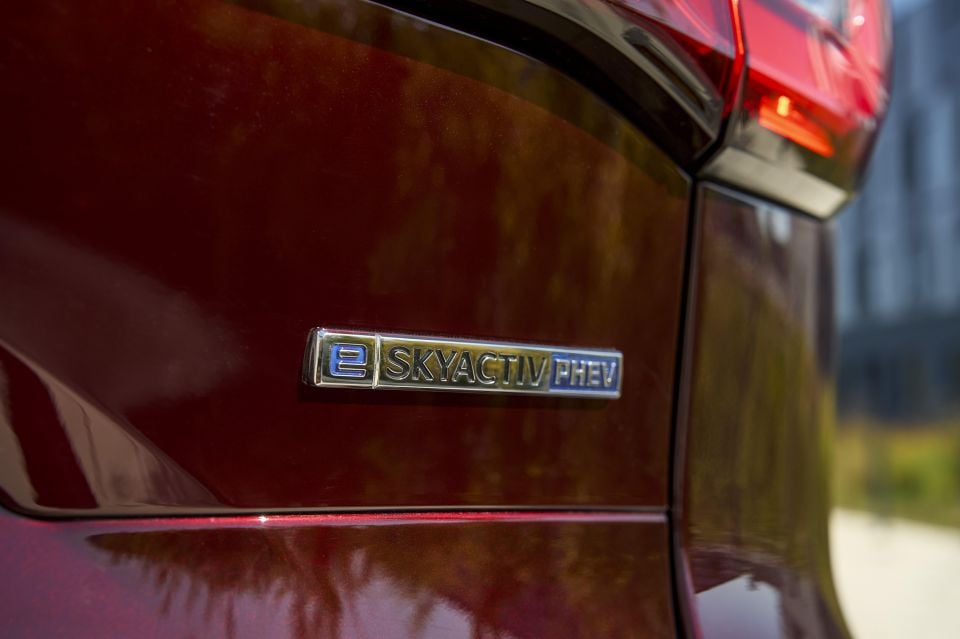
| Specifications | CX-80 e-Skyactiv PHEV | CX-80 e-Skyactiv D 3.3 MHEV |
|---|---|---|
| Engine | 2.5L 4cyl | 3.3L 6cyl turbo-diesel |
| Engine outputs | 141kW / 261Nm | N/A |
| Electric motor outputs | 129kW / 270Nm | N/A |
| System outputs | 241kW @ 6000rpm 500Nm @ 4000rpm | 187kW @ 3750rpm 550Nm @ 1500-2400 rpm |
| Transmission | 8-speed auto | 8-speed auto |
| Driven wheels | AWD | AWD |
| Battery | 17.8kWh | 0.33kWh |
| Electric driving range | 60km | N/A |
| Weight | 2165kg | 2056kg |
| Fuel economy (claimed) | 1.6L/100km (8.1L/100km with empty battery) | 5.8L/100km |
| CO2 emissions | 36g/km | 151g/km |
| Emissions standard | Euro 6e | Euro 6e |
| Braked tow capacity | 2500kg | 2500kg |
| 0-100km/h | 6.8 seconds | 8.4 seconds |
| Top speed | 195km/h | 219km/h |
To see how the Mazda CX-80 lines up against the competition, check out our comparison tool.
Mazda is not a huge car company compared to the likes of Toyota, Nissan, Mitsubishi. Australia is the fourth largest market for the Japanese brand and we account for about 100,000 of their annual 1.4 million global sales.
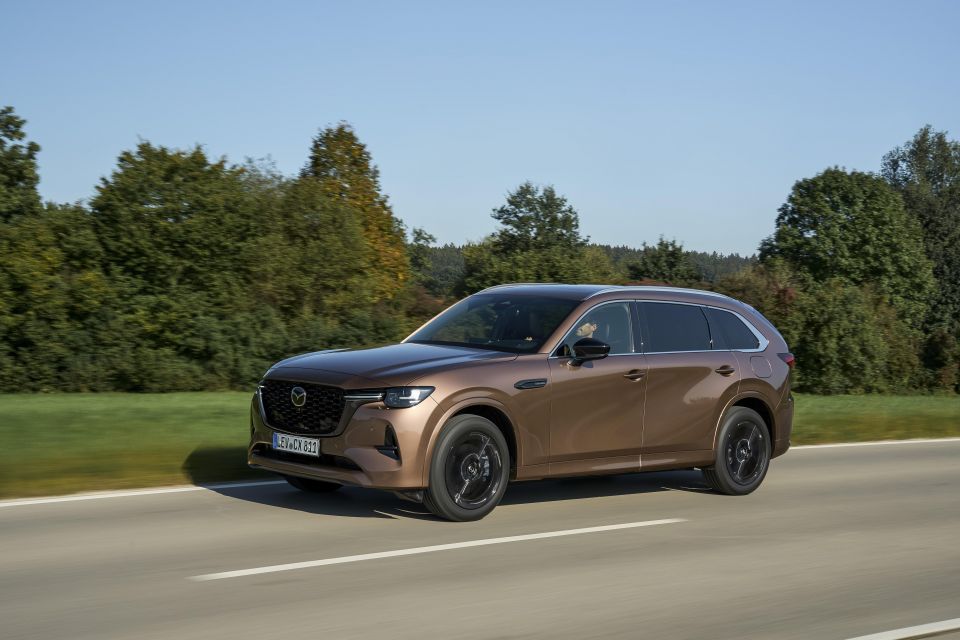
This means when Mazda Australia gives feedback to HQ in Japan, it listens. When Mazda Australia asks for a certain specification, it often gets it. This can’t be said for some other carmakers that see Australia as just another small market that doesn’t require much attention.
This is the main reason why the Australian market gets the base six-cylinder turbo-petrol option, which allows for a good entry price with very good performance. This engine is not offered in Europe or other main markets.
To start with, we jumped in the diesel CX-80 and got going along Munich’s super smooth but crowded roads. Our first impressions of the diesel is you definitely know you’re in a diesel. There is a bit of clatter upfront but it’s otherwise smooth and the eight-speed automatic transmission makes the most out of the massive 550Nm of torque.
It seems to be geared toward economy rather than performance, which is why it’s 1.6 seconds slower to 100km/h (at 8.4 seconds) than the PHEV which weighs 109kg more.
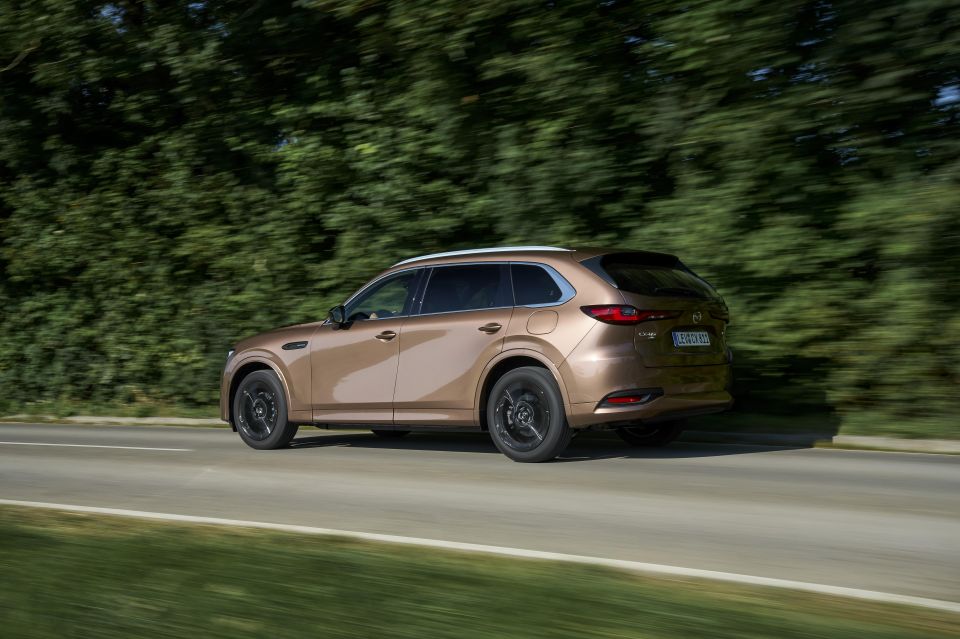
The 48V mild-hybrid system equips the diesel (and six-cylinder petrol) with a tiny 0.33kWh battery that weighs 15kg. It provides some power and torque assistance in certain situations, and also allows the electric systems to run smoothly when the engine is off.
If you intend to drive long distances frequently, the diesel is the one to go for because it’s going to be the most frugal in the long run. However, if you tend to simply get around town and keep your driving to about 50km a day (which is the average for most), the plug-in hybrid is worth a look.
As we have yet to see pricing, it’s hard to give an indicative estimate of how much money you will save on fuel in the long run by going for the more expensive PHEV.
What we do know is if you can charge at home at a reasonable rate, you will get about 60km of electric driving range each day, which for most is more than enough to almost never have to refuel while still having the option of going longer distances, with the petrol engine as backup.

When the 177.5kg high-voltage battery is depleted however, you’re carrying it around dead weight.
In terms of its driving performance, the PHEV is a much better experience than the diesel, not only because it’s faster but because it’s smoother and feels more alive. It also has better weight distribution than the diesel.
We will reserve our judgment for which engine we wholly recommend until we have driven the CX-80 with the base six-cylinder turbo-petrol motor.
A recent criticism of some Mazda SUVs has been ride compliance, which Mazda has acknowledged and taken action to address. For the CX-80, the company is running a new software setup for its steering wheel assistance and stability control while updating the front suspension geometry and removing the rear anti-roll bar.
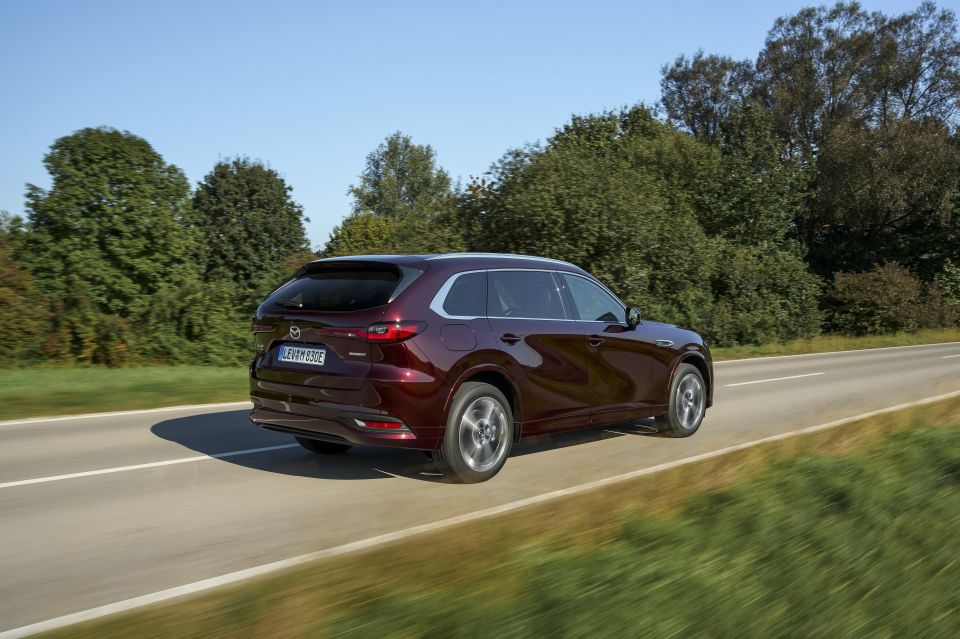
Find out more about the car
During our drive in both variants, we encountered some of the smoothest roads you can imagine, as the Germans seem to have worked out how to build roads without potholes. Nonetheless, we deliberately deviated onto some country roads and tried to upset the car’s balance by hitting bumps and uneven surfaces.
It’s fair to say the CX-80 would still benefit from an air suspension system, but given the affordability of the vehicle and its target market, it’s also obvious why it doesn’t have it.
The ride is not jarring or super stiff like some other models (which has been addressed in a fix) but we would like to see it a little softer. We also found the big SUV to lean a little bit more into corners than we expected.
We look forward to driving the new CX-80 on Australian roads but our first impressions of both powertrains are very positive, with the ride and handling to be more than acceptable.
Australian specifications for the Mazda CX-80 range haven’t been confirmed yet.
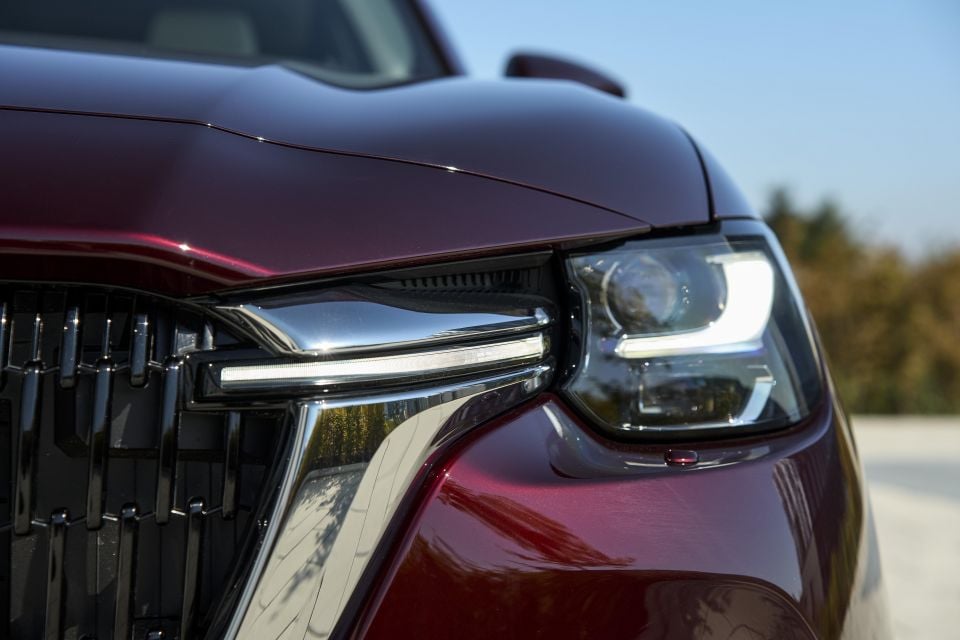



Like the CX-60, there will likely be three variants, starting with the base model Evolve, mid-spec GT, and top-spec Azami. The six-seater option will likely form part of an optional package, like the larger CX-90.
There is currently no ANCAP or Euro NCAP safety rating for the CX-80. Given it’s based on the CX-60 (a five-star car) however, we anticipate the CX-80 will also score the maximum score when it’s tested.
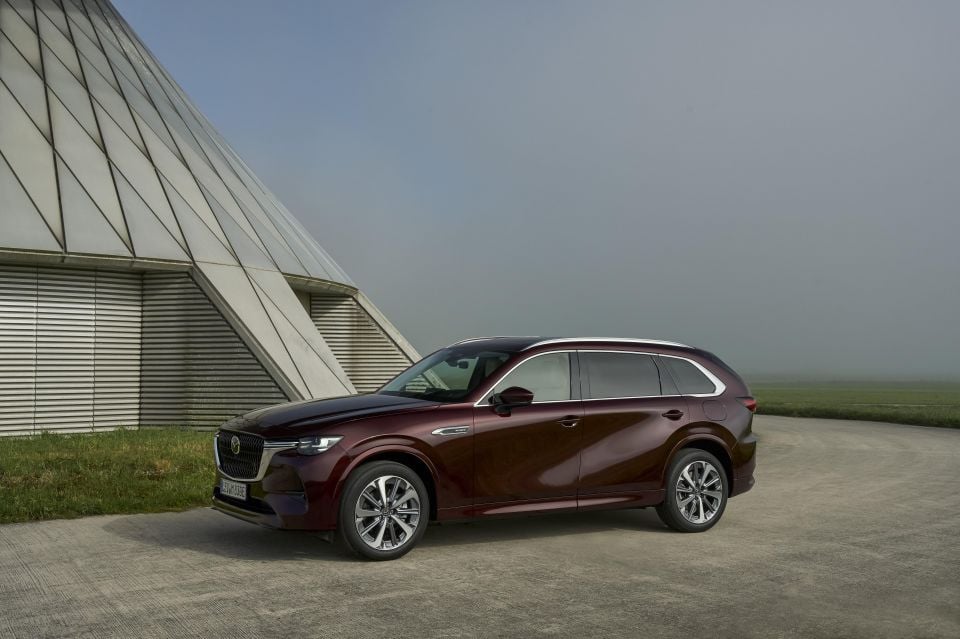
Standard safety features include:
Variant specific addtions:
Like the wider Mazda range, the CX-80 is covered by a five-year, unlimited-kilometre warranty. The high-voltage battery in the PHEV models is also covered by an eight-year factory warranty.
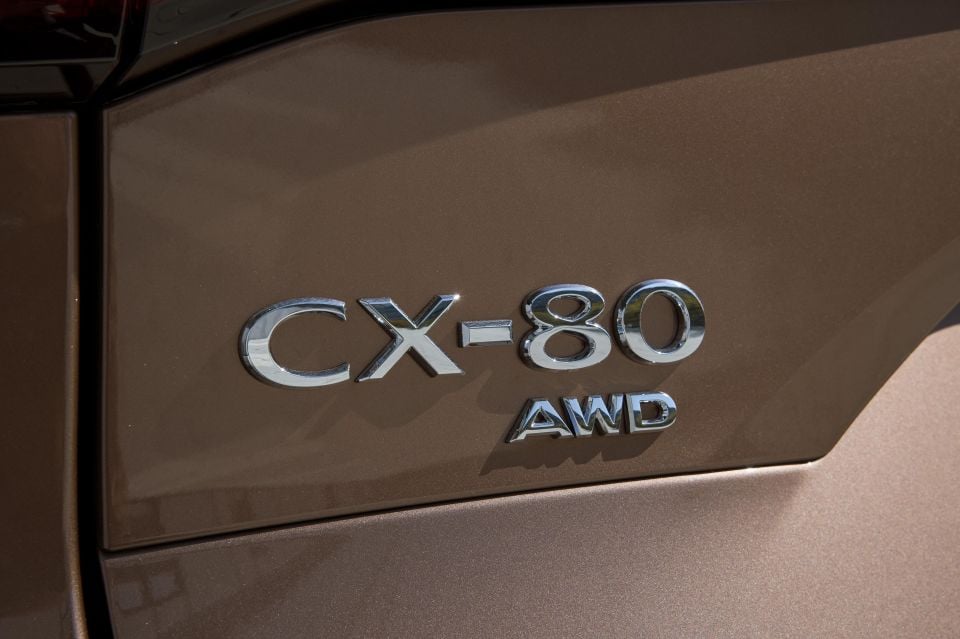
Mazda Australia is yet to confirm the running costs for the CX-80, however given it offers similar powertrains to the CX-60, we expect the runnings costs to be similar.
To see how the Mazda CX-80 lines up against the competition, check out our comparison tool.
The folks at Mazda have realised that in order to stay relevant and a step above the flood of cheaper Chinese vehicles coming to market, they need to provide a more compelling package with each new car.
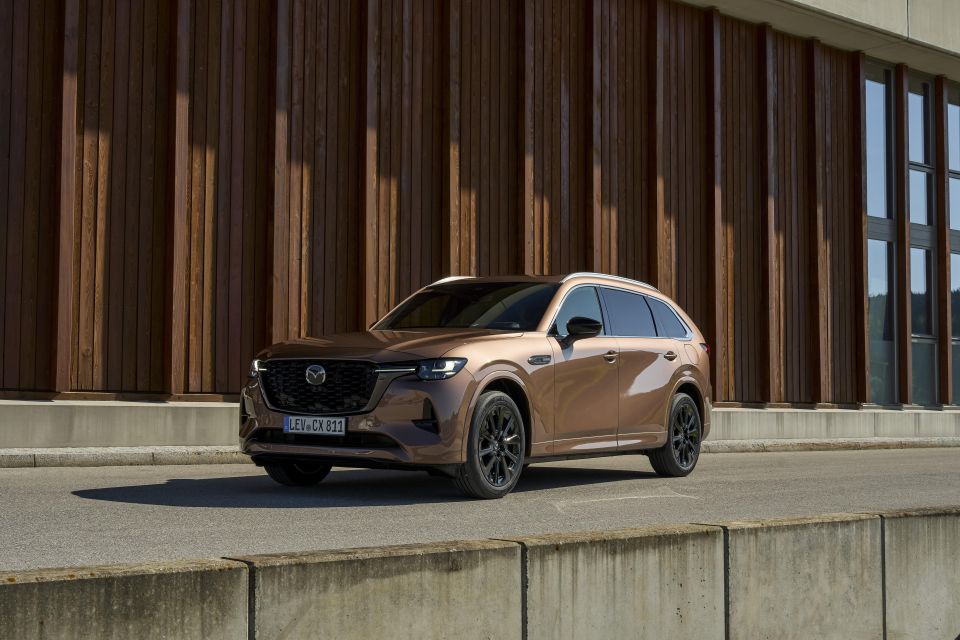
With this in mind the Mazda CX-80 is definitely a compelling package in many respects. Its interior puts many of its similarly priced, or even more expensive, rivals to shame. Australian buyers will also welcome the option of a six-or seven-seat interior.
We would like to wait until we drive the CX-80 on Australian roads before we can confidently praise its driving dynamics, but our first impressions in Europe certainly didn’t persuade us to think it was anything else.
The three powertrain options also give buyers a great deal of choice, providing a good entry model with the base six-cylinder petrol, a long-distance warrior with the diesel, and the perfect city commuter with the PHEV.
Overall, it’s yet another excellent SUV option from the Japanese brand, and if the local operation here can get its pricing right, it should be a sales success.
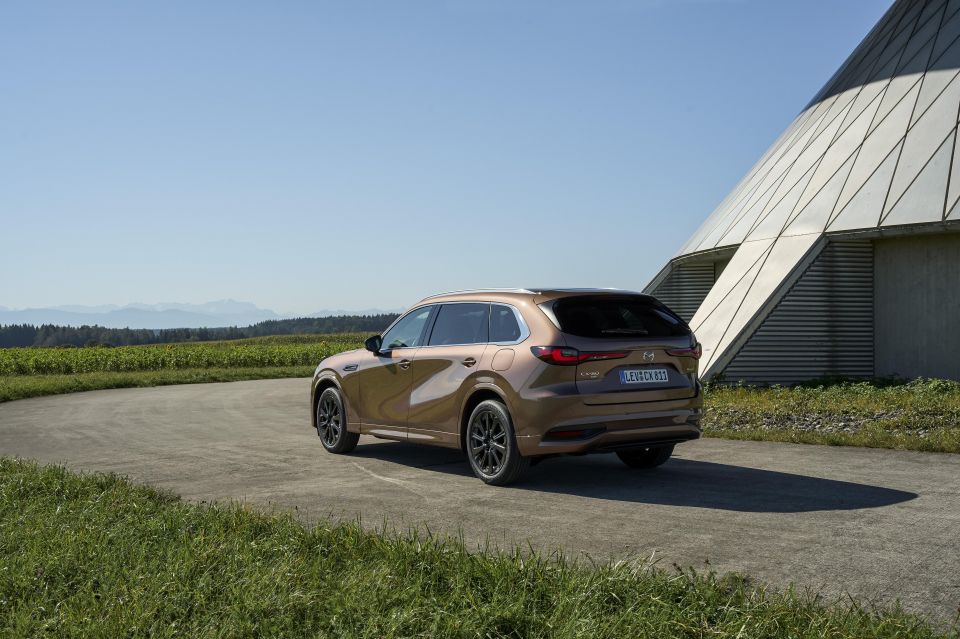
Interested in buying a Mazda CX-80? Get in touch with one of CarExpert’s trusted dealers here
Click the images for the full gallery
MORE: Everything Mazda CX-80
Take advantage of Australia's BIGGEST new car website to find a great deal on a Mazda CX-80.
Discover and compare similar models
Alborz is the founder of CarAdvice (sold to Nine and now Drive) and co-founder of CarExpert. He is an honourary adjunct professor & entrepreneur in residence at the University of QLD. He loves naturally-aspirated V8s, V10s and V12s and is in denial about the impending death of the internal combustion engine. The best way to reach him is via Instagram.


Alborz Fallah
3 Days Ago


William Stopford
3 Days Ago
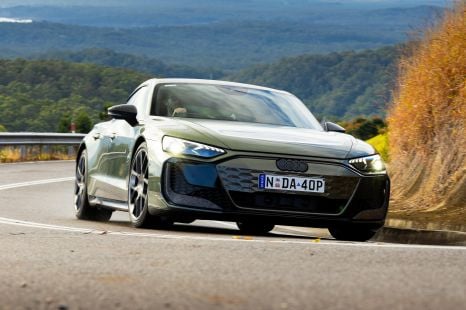

James Wong
2 Days Ago


Damion Smy
1 Day Ago


Alborz Fallah
1 Day Ago
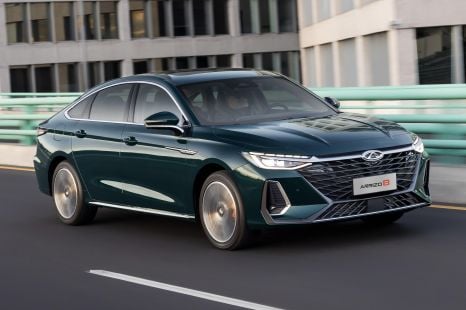

Max Davies
1 Day Ago